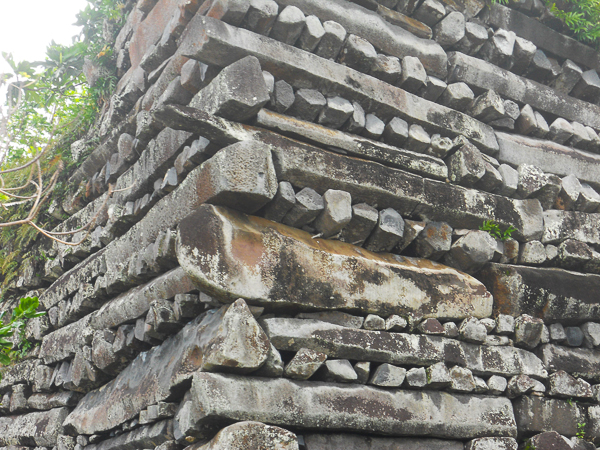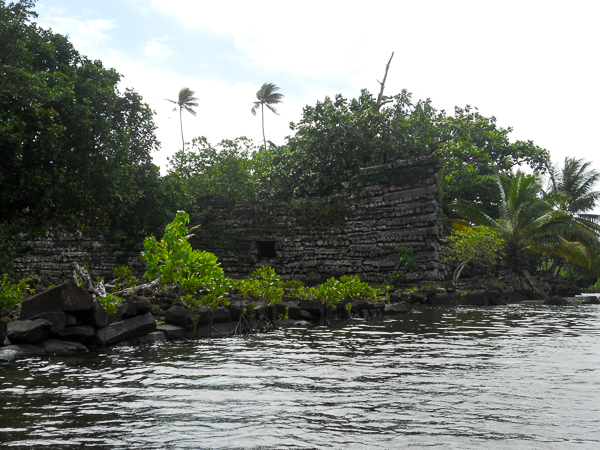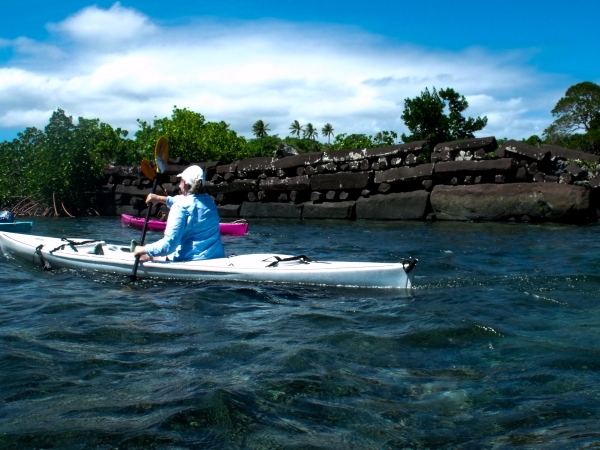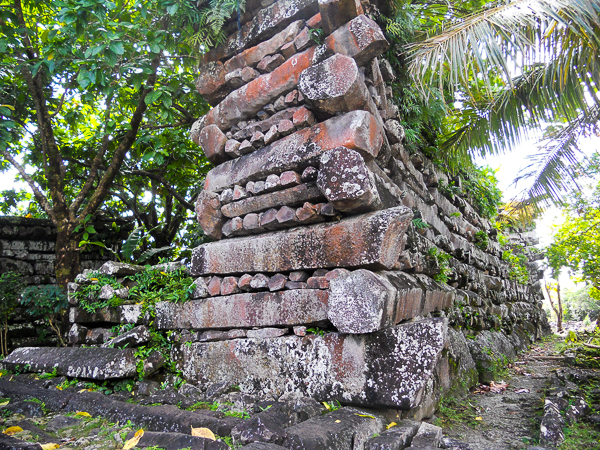
Approaching Nan Madol by boat there is little sense of the scale of the ruins that are about to surround us. The choppy waves of the Pacific subside as we make our way through narrowing mangrove channels until finally we see the first basalt columns above the clear water. A moment later there is no doubt the size of this ancient site, sitting to the south-east of the Micronesian island of Pohnpei. Nan Madol is probably the world’s most important historical treasure not to have been added to the UNESCO World Heritage list.
Facts and legends about Nan Madol merge freely, leaving those looking for knowledge about the site unsure what to accept. What is known for sure is the foundations for the site were constructed in the 8th or 9th centuries AD, with the striking architecture being built around the 13th century. The site is spread across more than 200 acres and consists of 92 man-made islands; the only ancient city in the world to have been built out of stone on a coral reef.

Why was it built? This is where we rely on oral history and where the story gets murky. Legend has it that two brothers, Olosipa and Olosopa, came from the west and built Nan Madol as a ceremonial place that would reunite warring clans. How were the 50 tonne, 6 metre long stones constructed into walls up to 10 metres high? By levitation using their specially endowed mental powers.
While the part about magic powers is disputed by scientists, what is clear is the abandonment of Nan Madol in the 16th to 17th centuries. Since then it has been left as we found it on our visit; peaceful, overgrown, eerie. Many Pohnpeians stay away from Nan Madol, believing it is home to spirits that should not be disturbed. We walk carefully around one of the larger islands, circling the hexagonal stones that are overgrown in many places by the abundant breadfruit trees.

Nan Madol is best viewed from the water and we later climb into a kayak and paddle gently between the islands, gaining an appreciation of the extent of this ancient city and the incredible amount of work that must have gone into its construction.
If Nan Madol was anywhere else in the world it would attract thousands of visitors every day. There is truly nowhere else like it. Yet during our two hours at the site we didn’t meet anyone beyond our small group of 7 that had set off from our hotel that morning. The day before, no-one had come; the day before that there had been two people.

On the one hand Pohnpeians are wary of suddenly having a large influx of visitors trampling over what for them is a sacred place; on the other hand an island that relies heavily on foreign hand-outs to survive could benefit greatly from the money that tourists would bring. The ownership of the land on which Nan Madol sits falls under the control of the local Nahnmwarki, the leader of the south-east municipality of Pohnpei. He has been reluctant to cede any control to the Micronesian government or to an outside body such as UNESCO. Negotiations are taking place to get Nan Madol onto the UNESCO list and to release funding that will allow vital repair and maintenance work to proceed, but it is by all accounts a delicate process.
In the meantime, those who brave the tortuous flight connections to reach Pohnpei and make it out to Nan Madol will be able to explore this incredible site with barely another person in sight. We made the trip from The Village hotel (for around $75 each including canoes). Sadly The Village closed in April 2013 but other hotels in Kolonia (the main town on Pohnpei) will be able to arrange a visit.
You can see more photos from our visit to Nan Madol here.




